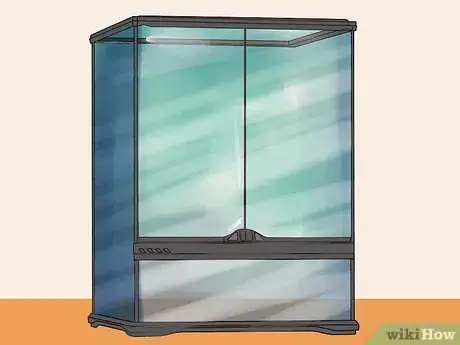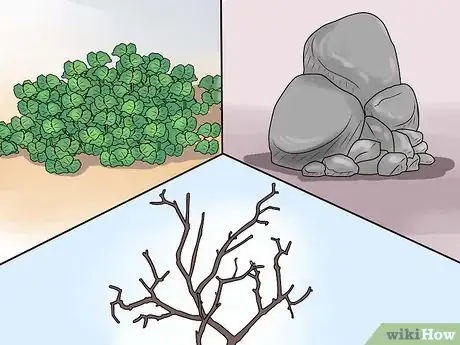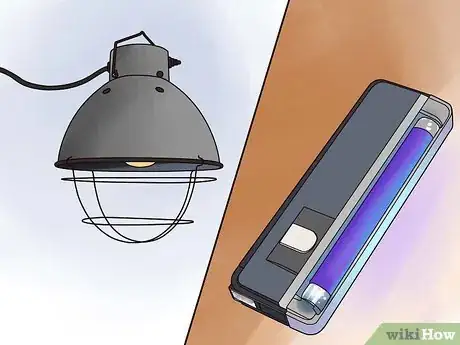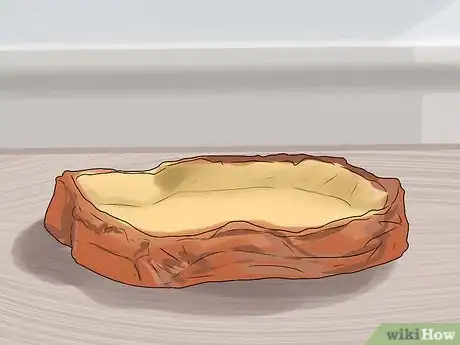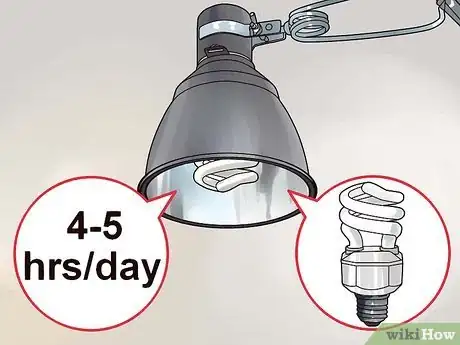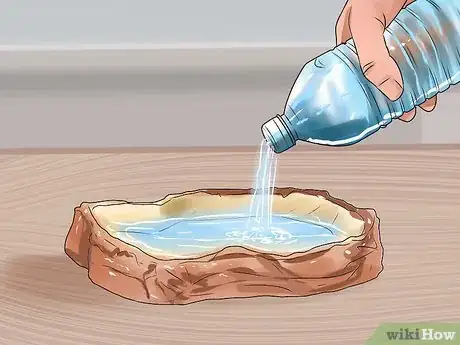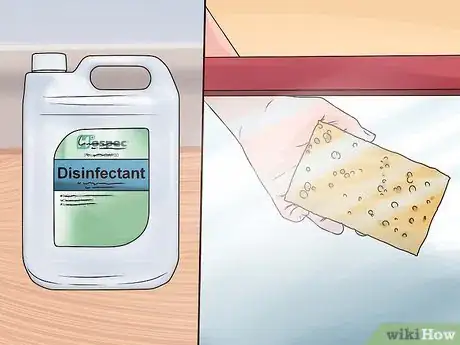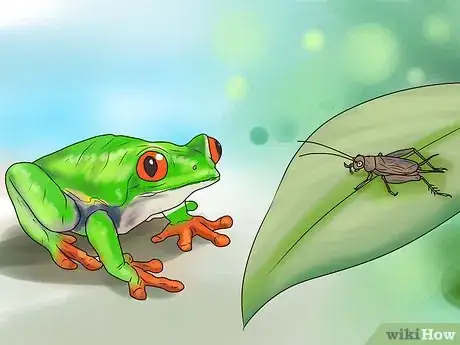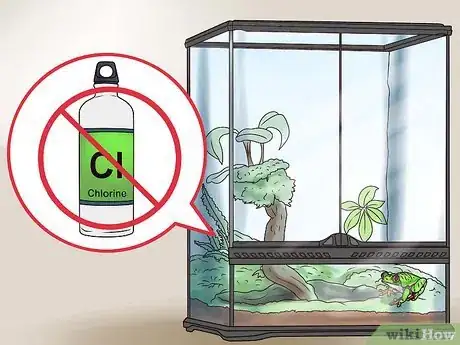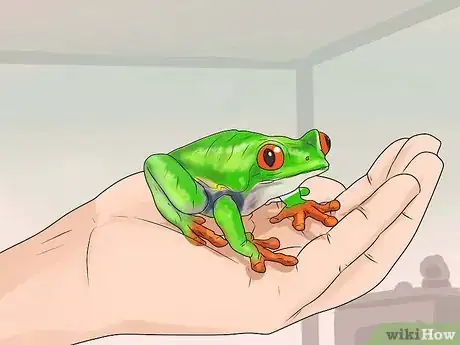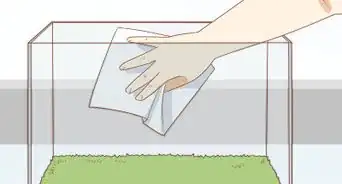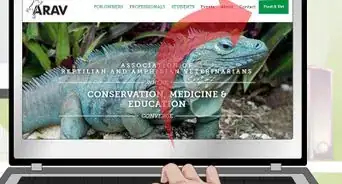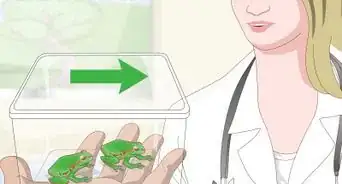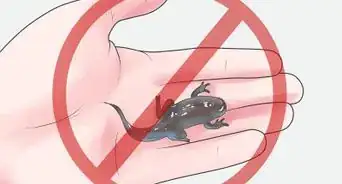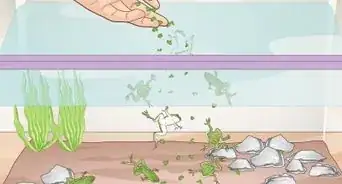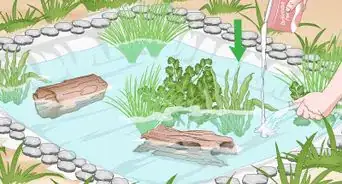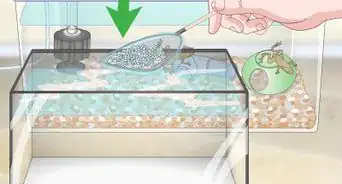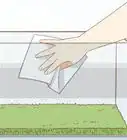This article was co-authored by Pippa Elliott, MRCVS. Dr. Elliott, BVMS, MRCVS is a veterinarian with over 30 years of experience in veterinary surgery and companion animal practice. She graduated from the University of Glasgow in 1987 with a degree in veterinary medicine and surgery. She has worked at the same animal clinic in her hometown for over 20 years.
There are 9 references cited in this article, which can be found at the bottom of the page.
wikiHow marks an article as reader-approved once it receives enough positive feedback. In this case, 91% of readers who voted found the article helpful, earning it our reader-approved status.
This article has been viewed 33,793 times.
Tree frogs make great pets, but require that you have a suitable environment and food for them to ensure they are healthy and happy. There are several species of tree frogs that are often kept as pets. White’s and Green tree frogs are the most common. Caring for tree frogs does take time and effort, but is well worth it!
Steps
Preparing a Home for Your Tree Frog
-
1Obtain a tank for your tree frog. Tree frogs require a tank at least 10 gallon (37.9 L).[1] Ensure that you get a suitably large tank so that your tree frog will have enough room to be healthy and happy.
- Tree frogs are accustomed to living in vertical spaces, so if possible use a tall tank.
- Tree frog tanks should be waterproof.
- Glass tanks work best, but plastic can be sufficient as long as the material will not break down under prolonged exposure to UV light.
- Make sure your tank has a fiberglass fly-mesh enclosure. [2]
-
2Prepare a tree frog friendly environment. Tree frogs need more than just a big empty space to thrive. You should try to make your tree frogs environment similar to the one the frog is used to in order to ensure the frog has a healthy living environment.
- Along the bottom of your tank, lay down a substrate to act as the “carpet.” Artificial substrates provide a safe and easy floor for your tree frog. Avoid small pebbles and gravel substrates, as your tree frog may eat pieces of it, which can cause serious health problems in some species of tree frogs.[3]
- Place foliage, large rocks, and branches in the tank. You can use either real or fake foliage and branches. Fake foliage will be easier to maintain and will not need to be replaced as often. Arrange them so that your tree frog can climb at varying heights in the tank.
Advertisement -
3Heat the tank by installing an aquarium heater. Alternatively, use a heat lamp of no more than 15 Watts mounted above the tank. In either case, maintain a temperature of a minimum of 18 C inside the tank at all times. Your frog will be comfortable in the 24-26 C temperature range. [4]
- A large rock near the heater will give your tree frog a place to bask in the heat.
- Monitor the temperature using two thermometers, one near the bottom of the tank and one near the top.[5]
-
4Create a wet and humid environment for your tree frog. Humidity can be measured using a hydrometer. Humidity levels should be between 50-60%.[6]
- Be sure to give your tree frog a water dish or even a small pond in the tank. The water should be de-chlorinated using de-chlorination drops that you can get at the pet store.[7]
- Including a source of running water (like a waterfall) can help keep the tank humid.[8] Such water features can be purchased as a pet store.
- Soaking in chlorinated water can harm your tree frog.
- You will need to change the water regularly, so ensure the water container is easily accessible to you. Make sure that your tree frog has water available at all times.[9]
-
5Light the tank. There is some debate over whether or not tree frogs require UV (ultraviolet) light, although some research says that a complete lack of UV light can cause problems for a tree frog.[10] To set up UV lighting, purchase a UV lamp to mount above the tank. The UV light can run 4-5 hours a day.
- To ensure you are using the correct lamp type, purchase an Ultraviolet-B emitting bulb.[11]
- Your frog will benefit from maintaining a 12-hour day/night cycle.[12] Set up an automatic timer so you do not have to remember to turn the light on and off in twelve hour increments or worry about being home at the right time to ensure proper lighting.
- Florescent lighting can provide light without substantially affecting the amount of heat in the tank, which can help you more easily regulate the temperature inside.[13]
- You can purchase kits to mount lights above your tank at the pet store.
Maintaining Your Tree Frog’s Home
-
1Replace the water daily with clean, de-chlorinated water. Dirty water poses a health risk to your frog and should be changed whenever dirty, which can be as often as daily when using a small water dish.
- Using bottled water can help speed up the water changing process because it is already de-chlorinated and will therefore save you a step.
- Make sure that you have clean water ready to go when you take the dirty water out of the tank. You don’t want your frog to have to go too long without water available.
- If you forget to de-chlorinate the water before putting it in the tank, immediately use de-chlorination drops on the water. [14]
-
2Wash the tank regularly. In order to keep your tank a healthy habitat for your tree frog, it is important to keep the tank clean. The inside of the tank, any accessories or décor, water bowls, small ponds and branches, etc. should all be cleaned.
- Use a disinfectant to clean the tank and the accessories. Use a small brush to help clean smaller items with the disinfectant and make sure to thoroughly rinse everything.
- After washing, let everything dry completely before reassembling the tank.[15]
- While washing the tank, make sure your frog has a suitable place to live. A small, enclosed (but breathable) dish or bowl with a small amount of clean water will suffice, but does not make for a healthy long-term environment. Make sure to reintroduce your frog to its tank as soon as it is clean again.
- Frog tanks need to be washed frequently. Inspect the tank daily and clean it as soon as it looks dirty.
-
3Monitor your tank’s heat and humidity using a thermometer and hygrometer. Tree frogs require warm, humid environments. If you have set up your tank properly, heat and humidity should not be a problem. However, it is important to monitor both to ensure that the environment remains suitable for your tree frog at all times.
- The tank should be at least 18 C at all times.
- The ideal humidity level is between 50% and 60%.
- You can also mist your tree frog with clean, de-chlorinated water daily.[16]
Caring for Your Tree Frog
-
1Feed your tree frog. Crickets are the main food source for most tree frogs and will serve as their primary food. Your frog will have different food requirements depending on its age. If you are ever unsure about your frog’s diet or eating habits, do not be afraid to consult with a veterinarian. Feed your tree frog by putting crickets in their tank.
- Young frogs should be fed smaller crickets and will often eat all the time. Make sure a food source is available to them.
- Young adult frogs can be fed less often, but can be fed larger crickets.
- Adult frogs can be fed about 2-3 times per week with large feedings.
- You can find food supplies at most pet stores. Or, if you are more adventurous, you can try to Raise Your Own Crickets!
- Occasionally introduce variety in you frog's diet, by feeding them worms, moths, or flies.
-
2Keep your tree frog healthy. If you keep the tank clean and the tree frogs properly fed, your tree frogs should stay healthy, but if they start acting strange, change their eating habits, or look unhealthy, be sure to get them help.
- A common problem is dirty or chlorinated water. Be sure to keep your tree frog’s water clean at all times.
- Likewise, dirty tanks can allow harmful bacteria to breed in the tanks and can be harmful to your tree frog.
- Symptoms to be on the look out for include: weight loss due to a change in eating habits, extreme inactivity, swelling, and difficulty breathing.[17]
-
3Treat your frog… like a frog! Frogs are not mammals and they do not like to be cuddled like dogs, cats, or hamsters. Be sure you are taking into consideration what your tree frog wants.
- Handle your tree frog only infrequently.
- Tree frogs will often wet when nervous or stressed. If they do this while you are holding them, it is a good indication to put it back down in the tank.
Things you Need
- A 10 gallon (37.9 L) tank.
- An aquarium heater.
- Florescent and UV lights.
- Branches, trees and other tank-décor for your tree frog to sit, jump and climb on.
- Crickets or other suitable tree frog food.
Warnings
- Always consult a professional veterinarian if you have questions about your tree frog’s health.⧼thumbs_response⧽
- Always wash your hands before and after handling your tree frog.⧼thumbs_response⧽
References
- ↑ http://www.anapsid.org/greentreefrog.html
- ↑ https://frogs.org.au/x/media/cs-caerulea.pdf
- ↑ http://azeah.com/frogs/basic-care-whites-tree-frog
- ↑ https://frogs.org.au/x/media/cs-caerulea.pdf
- ↑ http://www.peteducation.com/article.cfm?c=17+1796&aid=3033
- ↑ http://www.theamphibian.co.uk/whites_tree_frog_care_sheet.htm
- ↑ http://allaboutfrogs.org/info/housing/aquatank.html
- ↑ https://frogs.org.au/x/media/cs-caerulea.pdf
- ↑ http://azeah.com/frogs/basic-care-whites-tree-frog
- ↑ https://frogs.org.au/x/media/cs-caerulea.pdf
- ↑ http://azeah.com/frogs/basic-care-whites-tree-frog
- ↑ http://www.reptilesmagazine.com/Frogs-Amphibians/Whites-Treefrog-Enclosure-Information-and-Care/
- ↑ http://allaboutfrogs.org/info/housing/aquatank.html
- ↑ http://allaboutfrogs.org/info/housing/aquatank.html
- ↑ http://www.peteducation.com/article.cfm?c=17+1796&aid=2847
- ↑ http://www.anapsid.org/greentreefrog.html
- ↑ http://azeah.com/frogs/basic-care-whites-tree-frog
About This Article
To care for a tree frog, keep it in a tall glass tank that's at least 10 gallons. Line the bottom of your tree frog's tank with an artificial substrate, and add plants, rocks, and branches so your frog has things to climb on and hide in. You should also put a water dish in the tank and keep it filled with fresh, dechlorinated water. To keep your tree frog warm, set up an aquarium heater or heat lamp so the temperature is always at 24-26 degrees Celsius. To learn how to feed your tree frog, scroll down!
